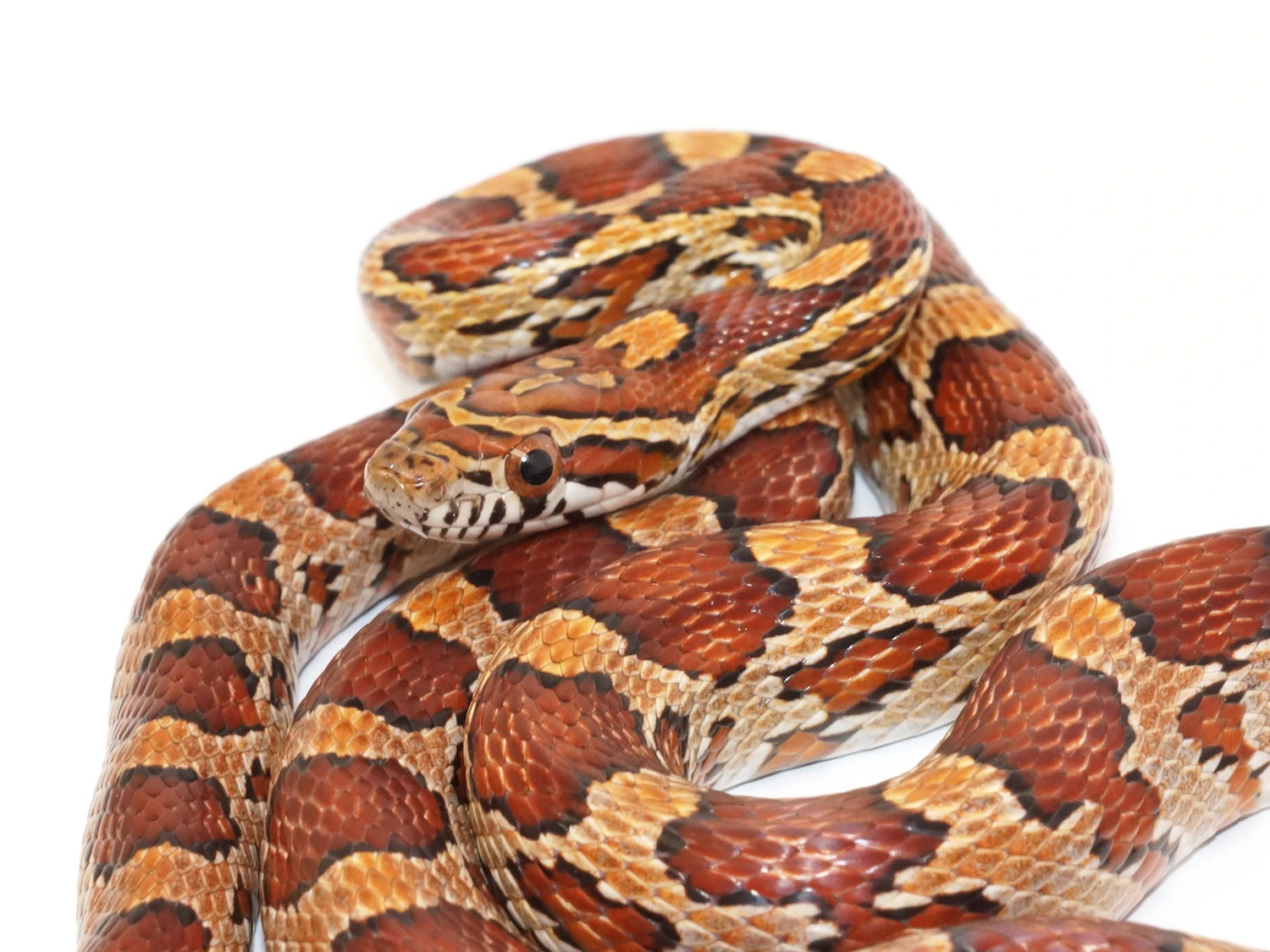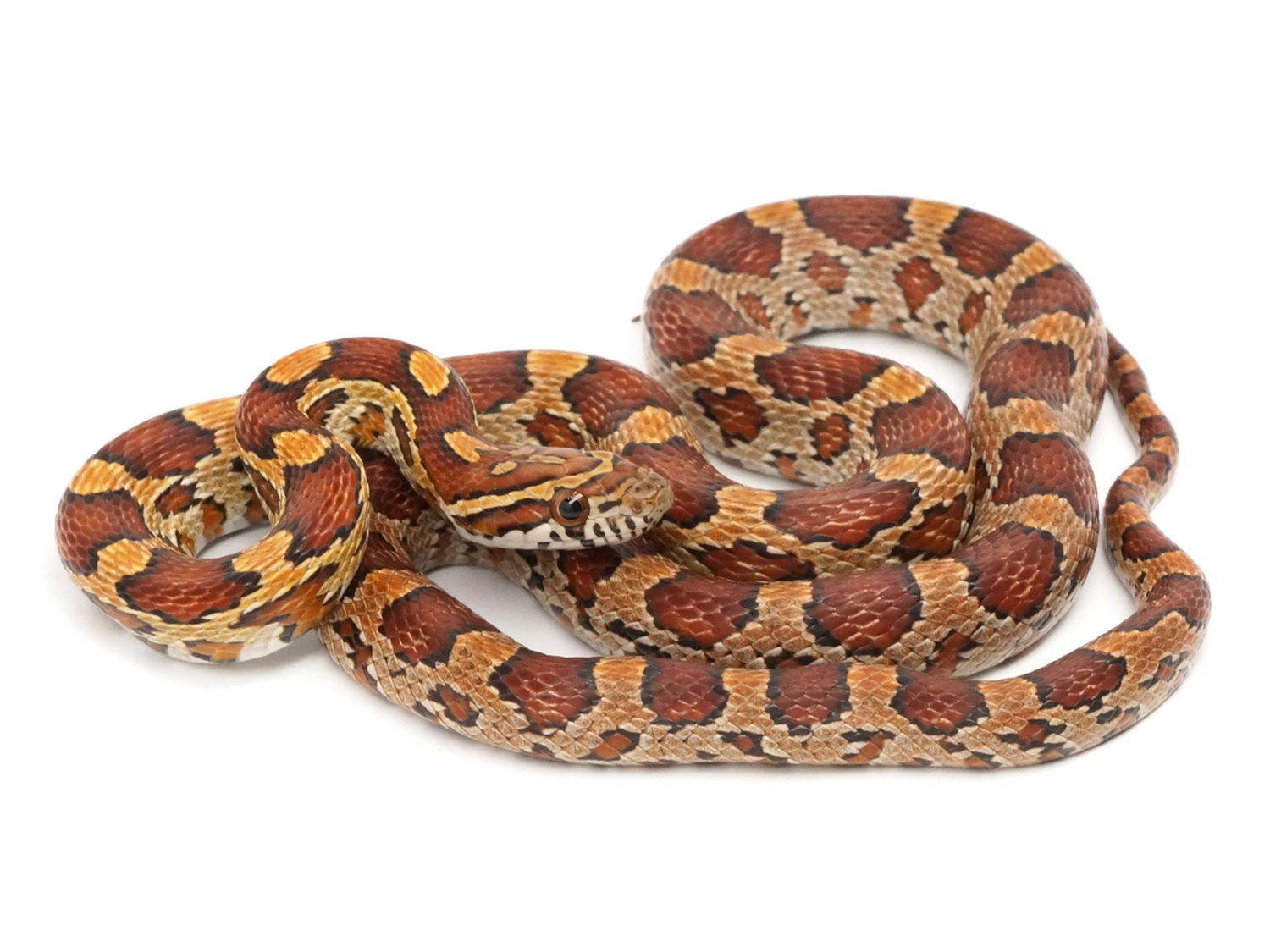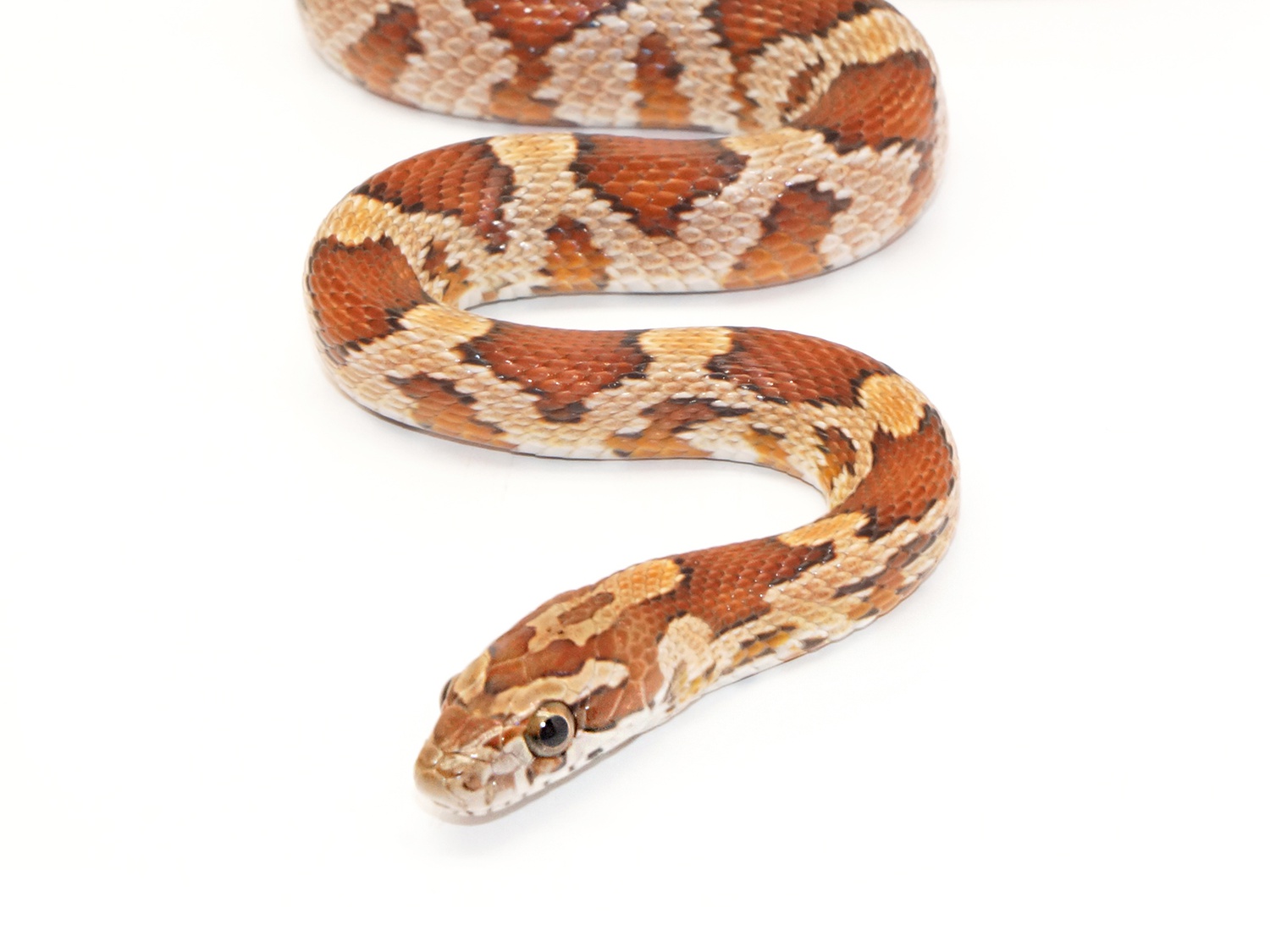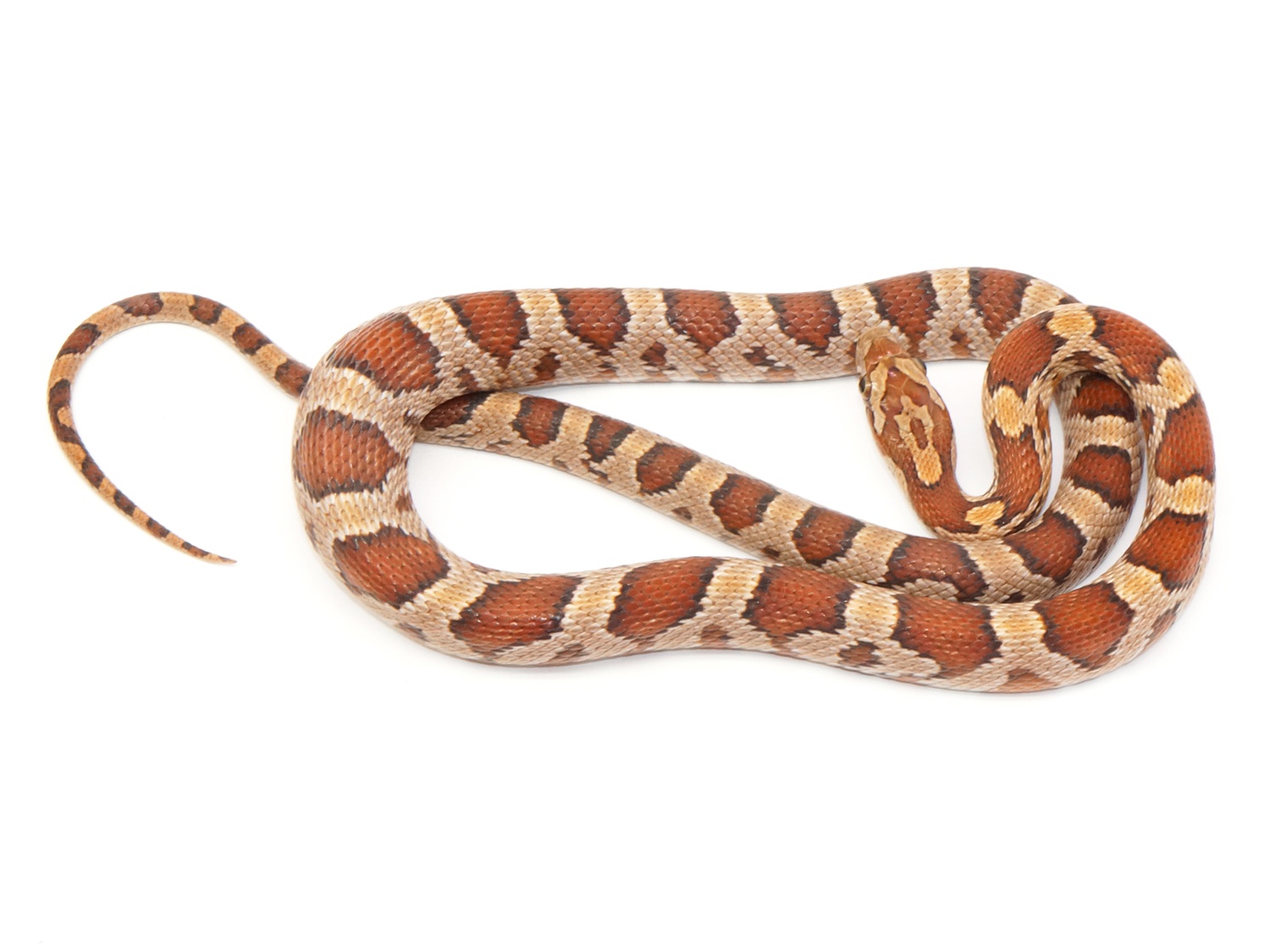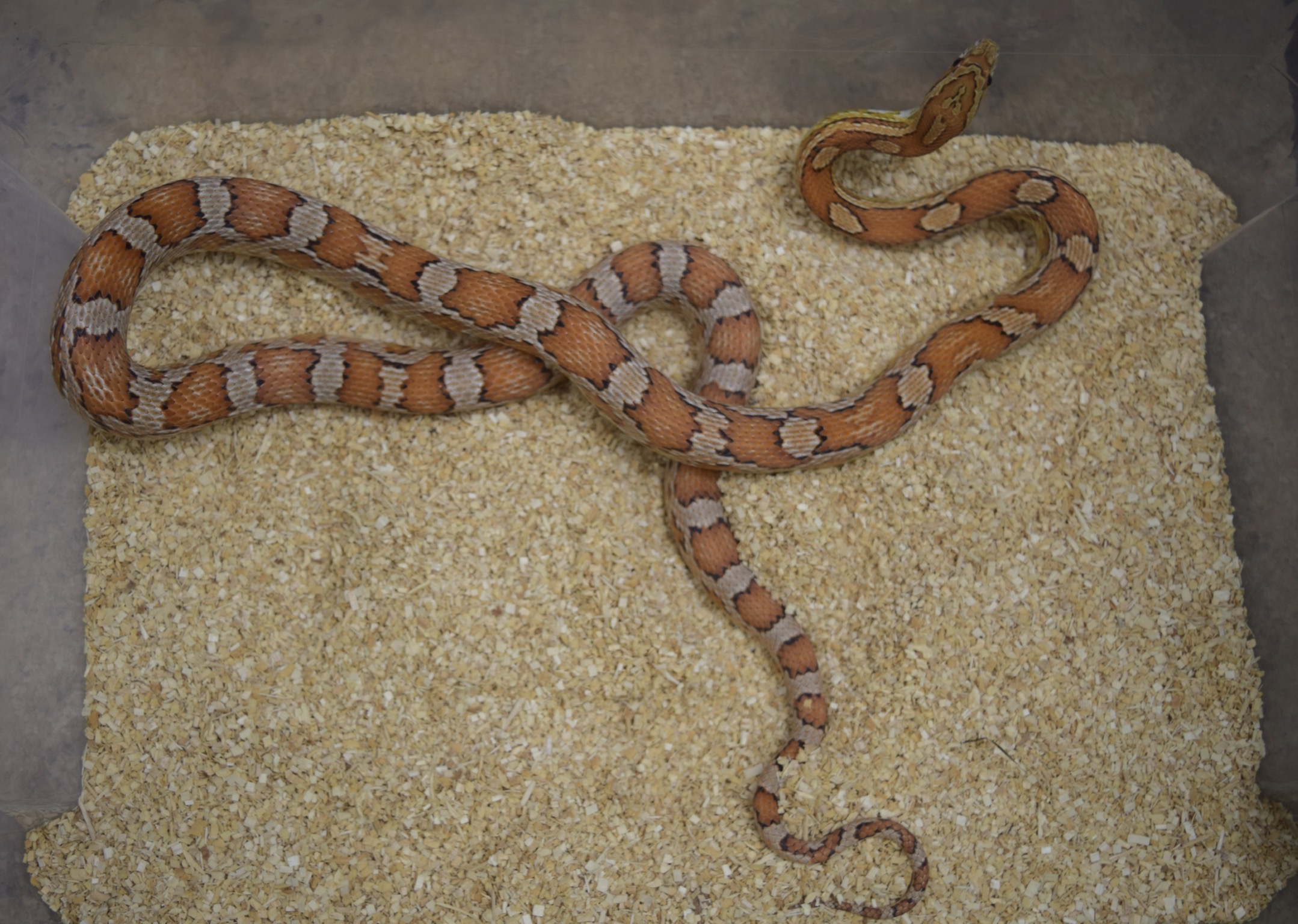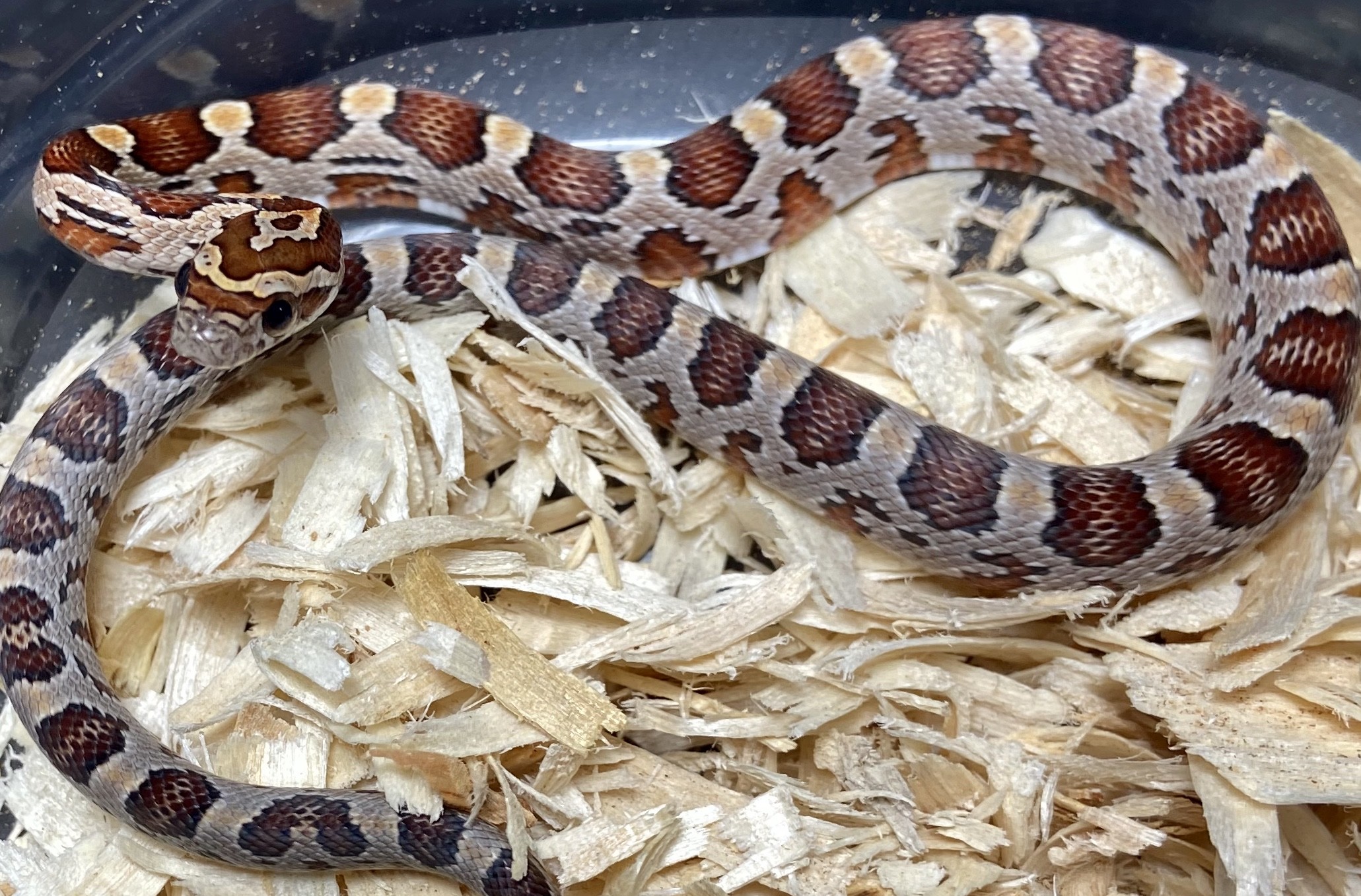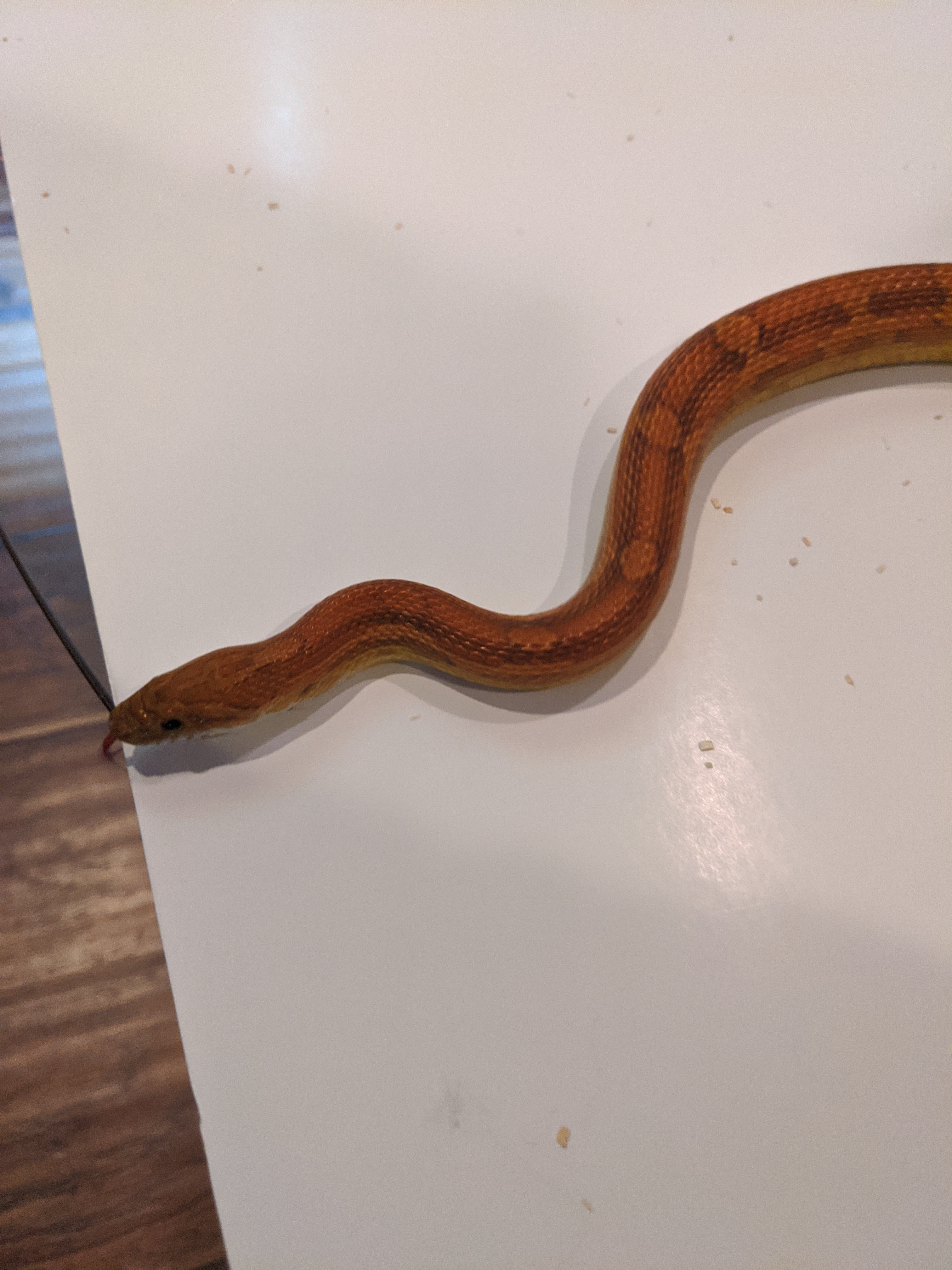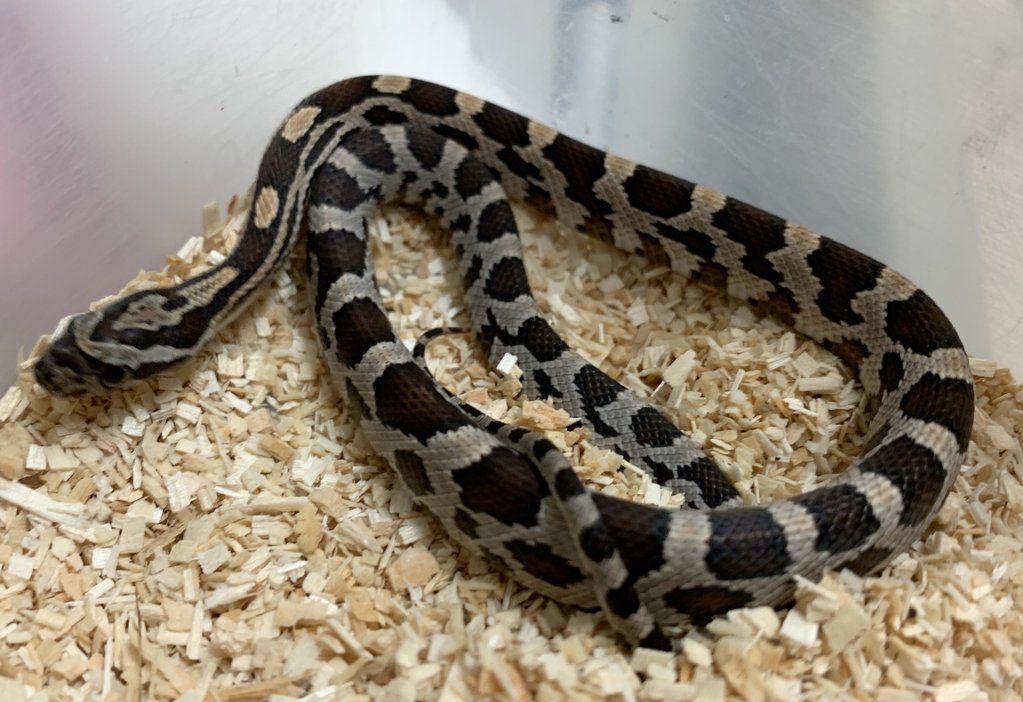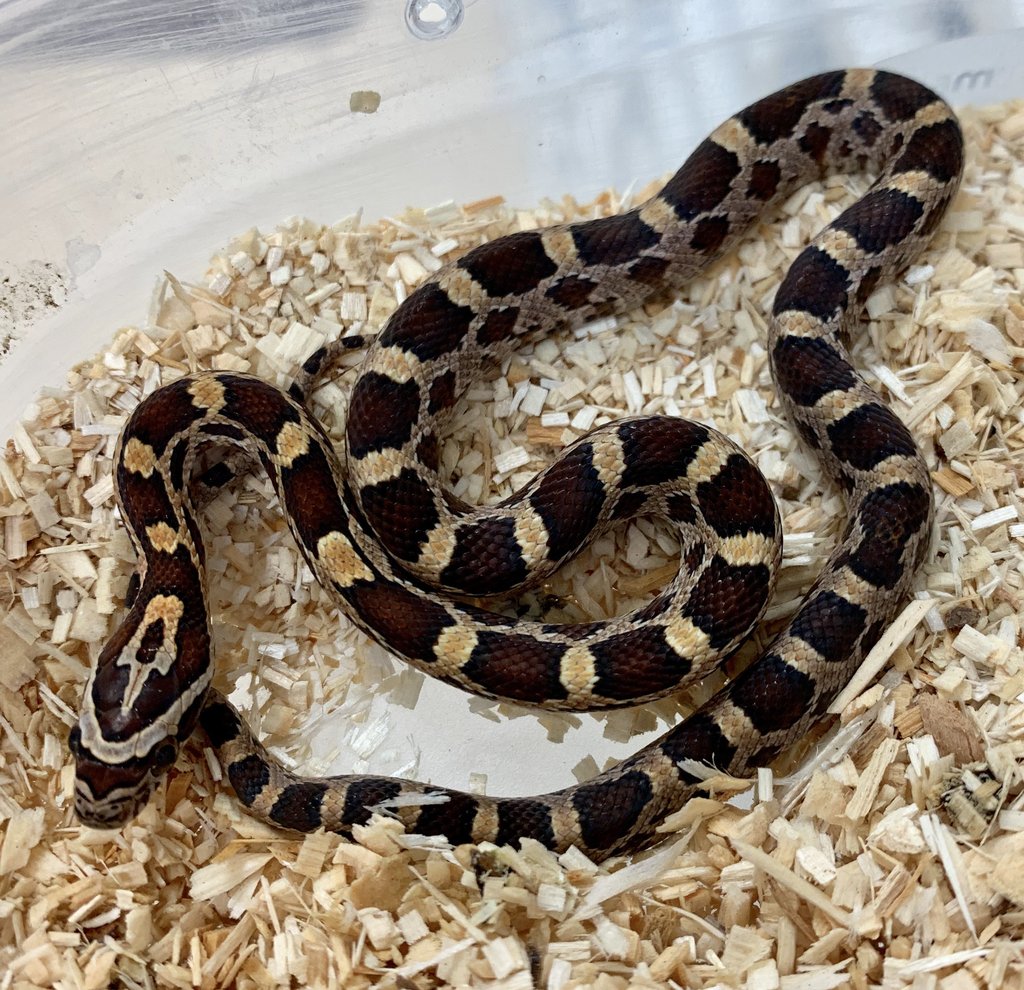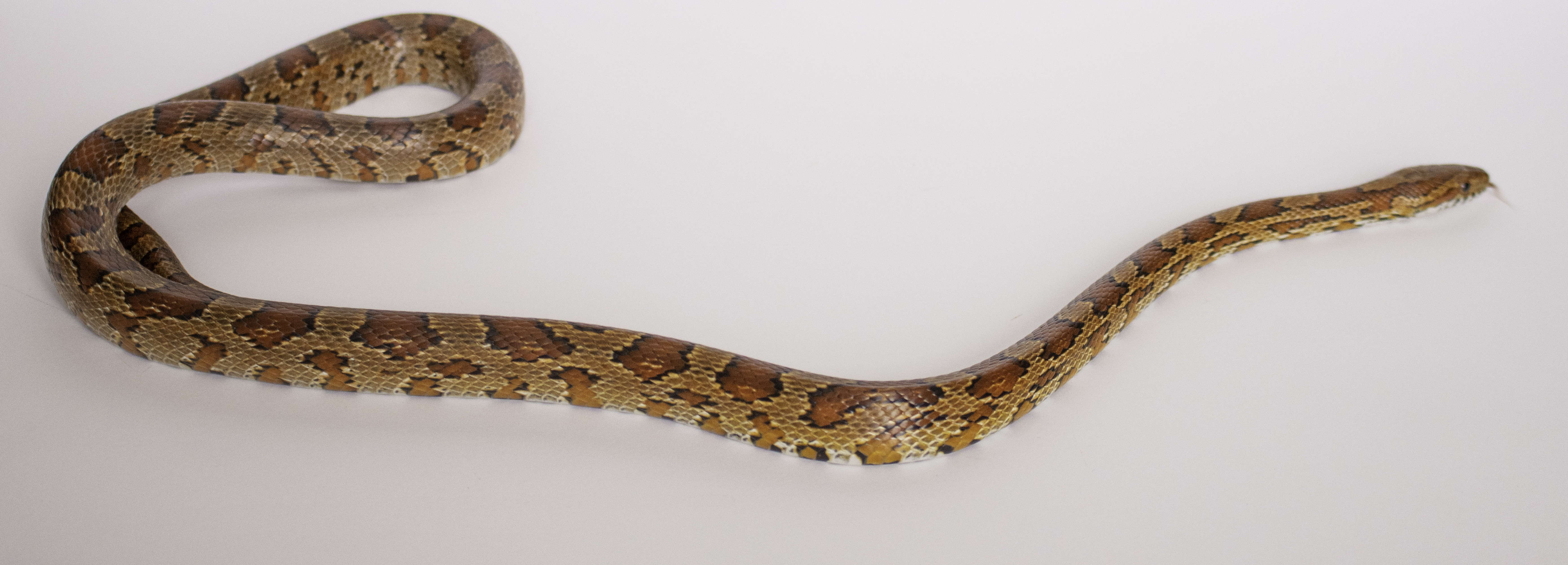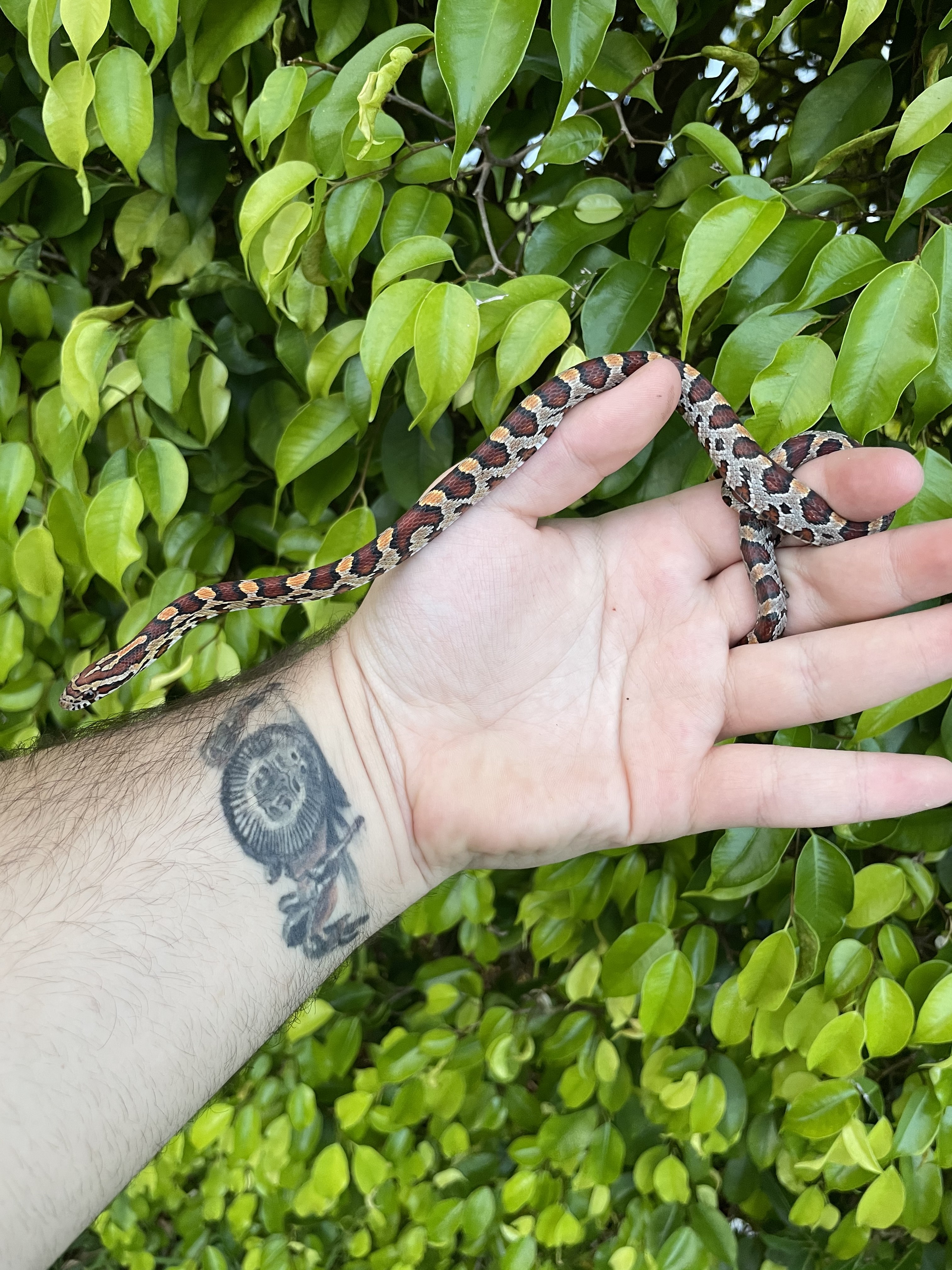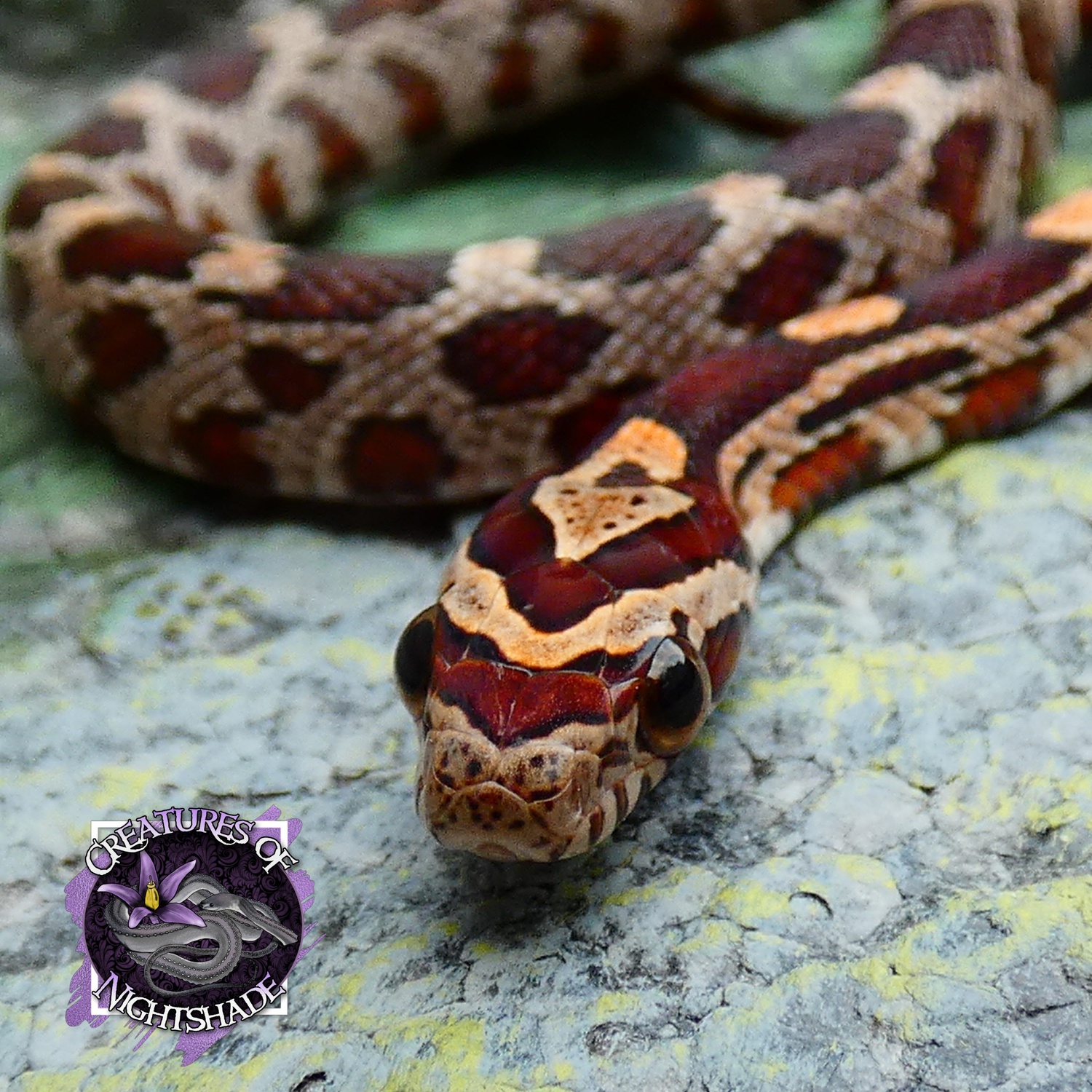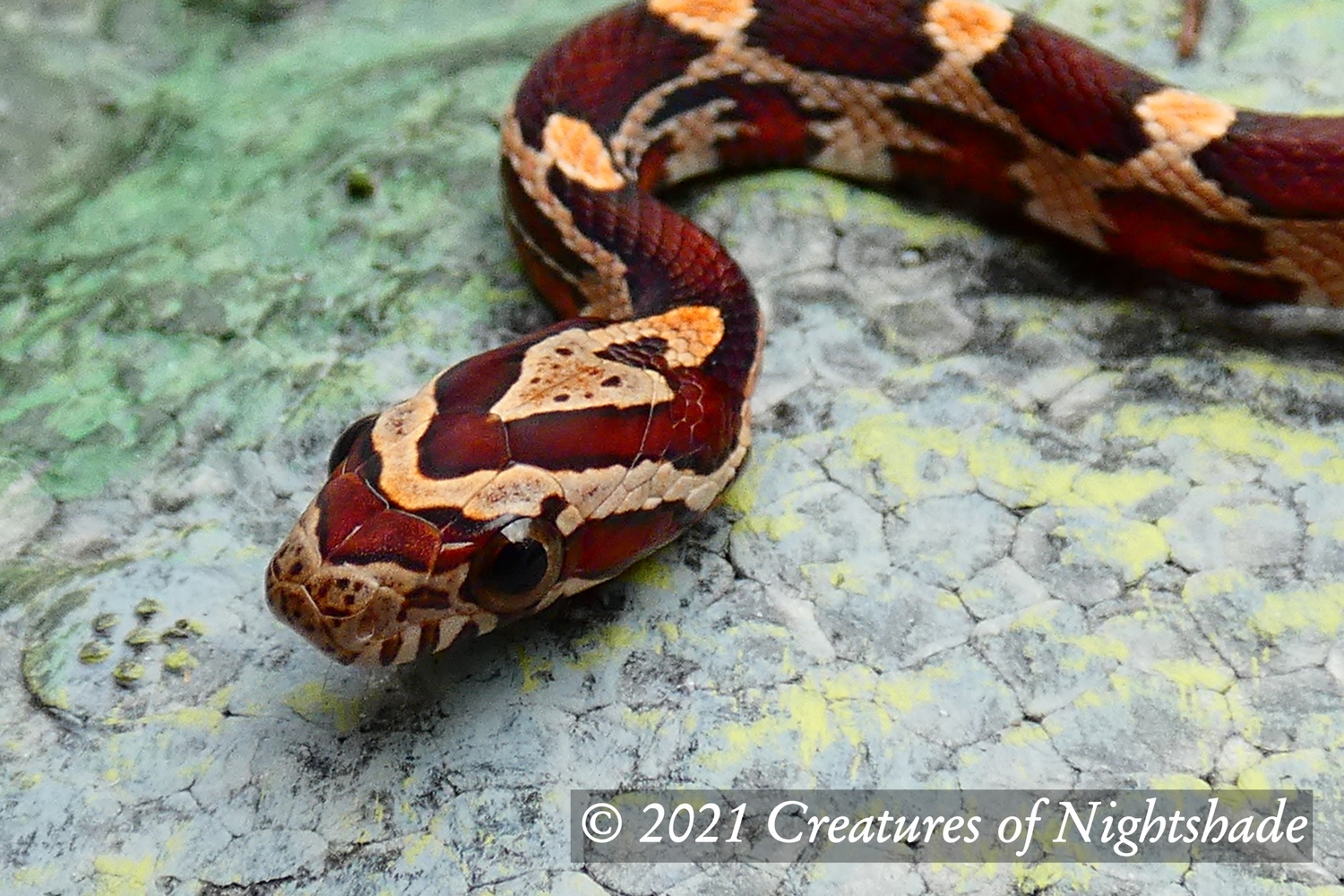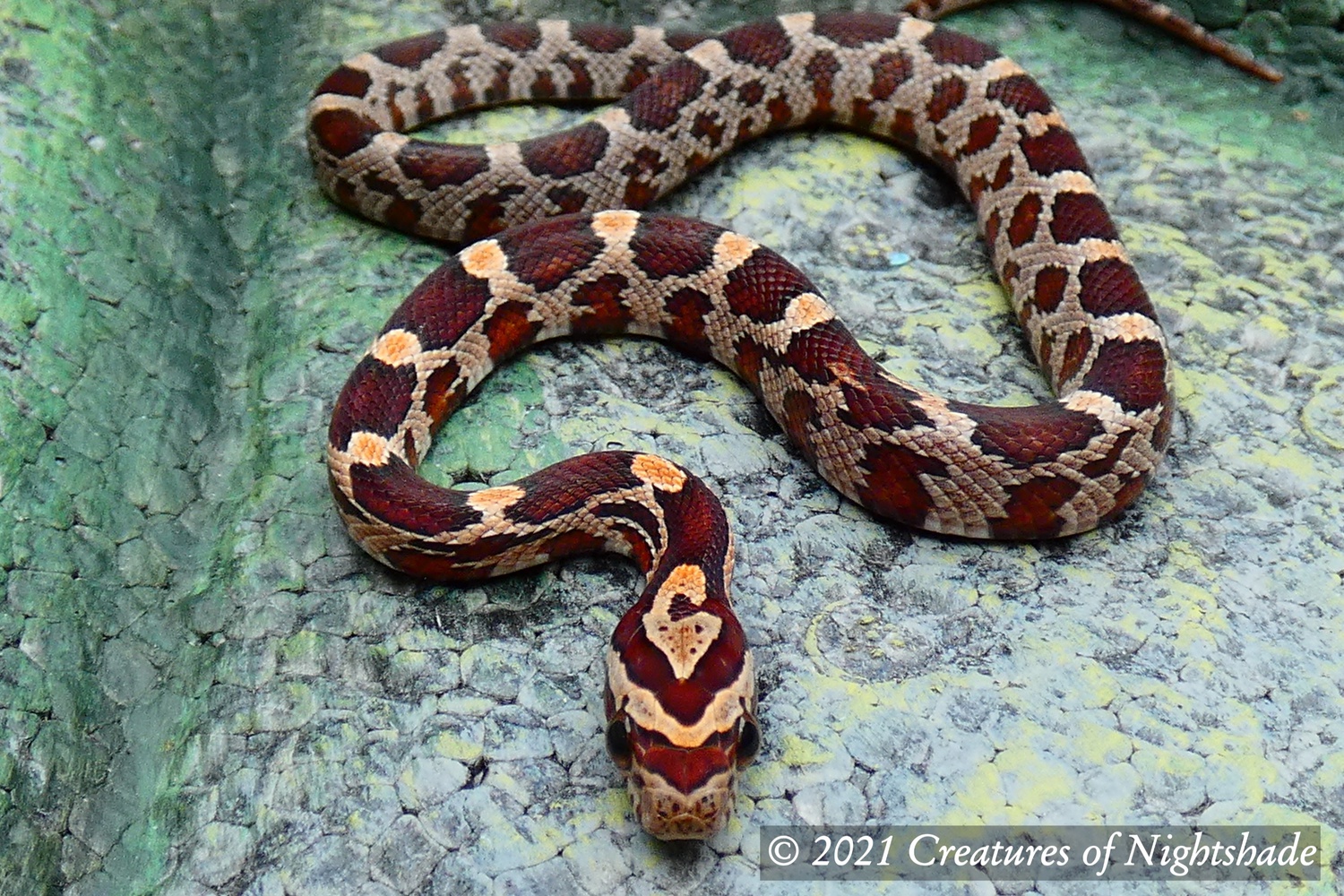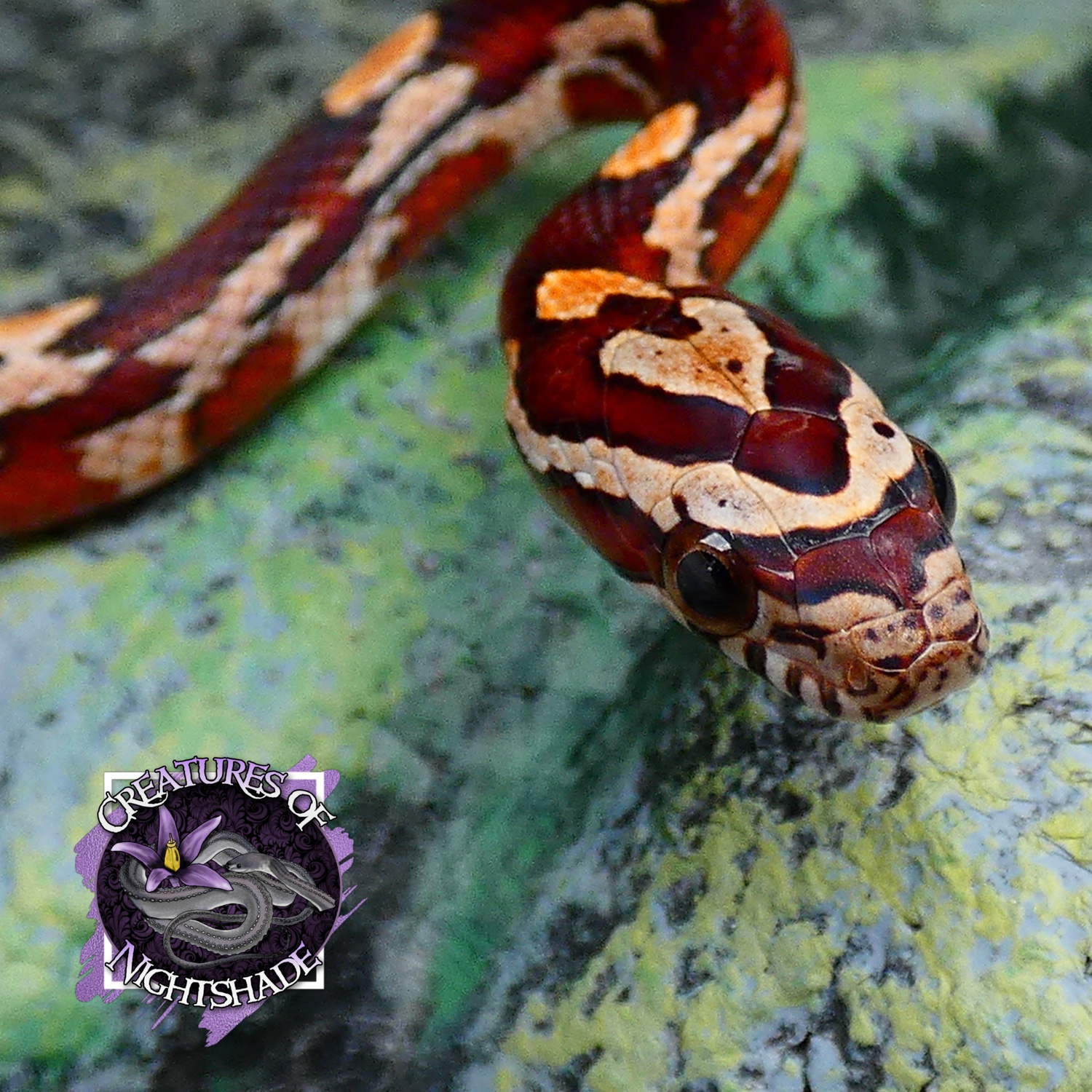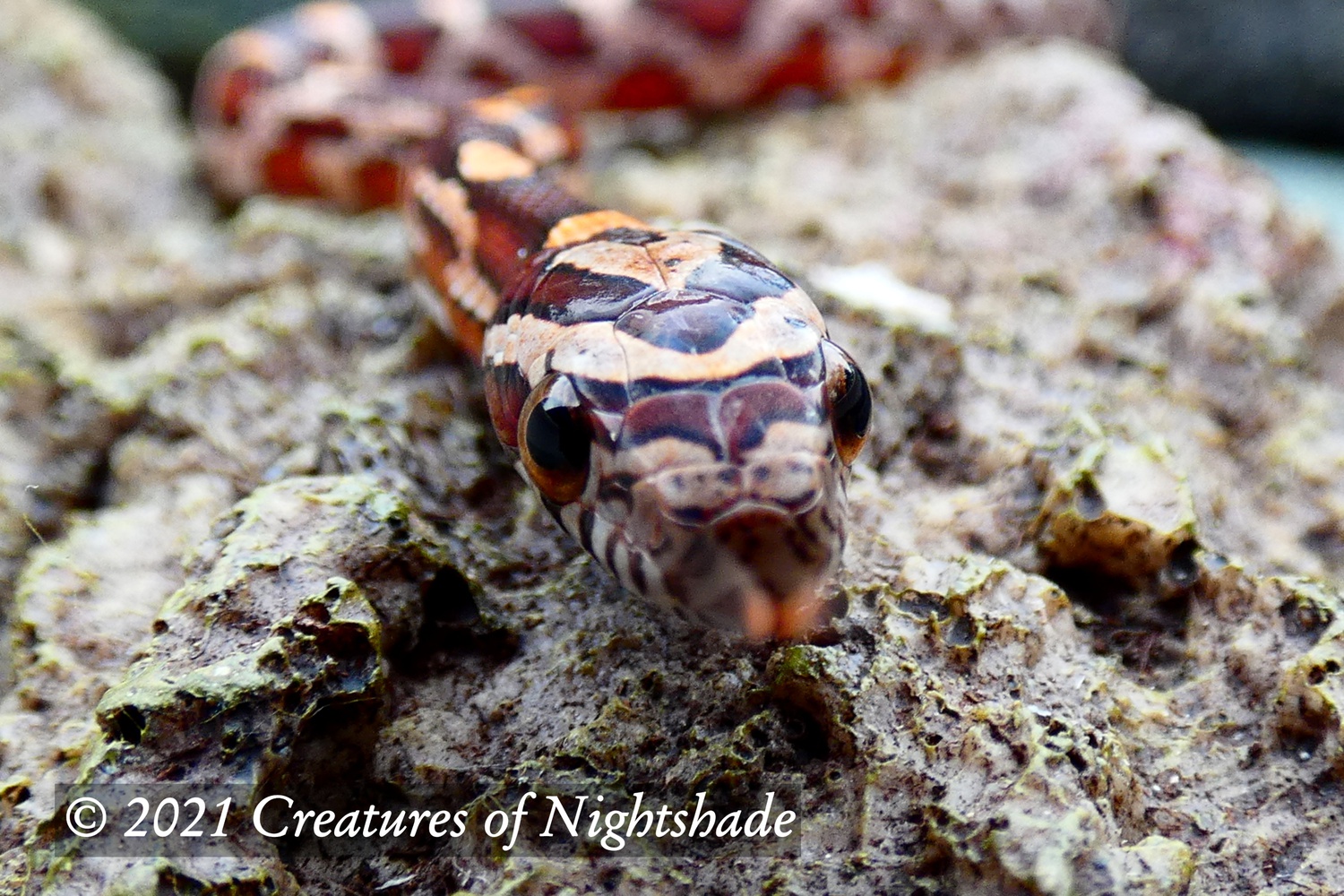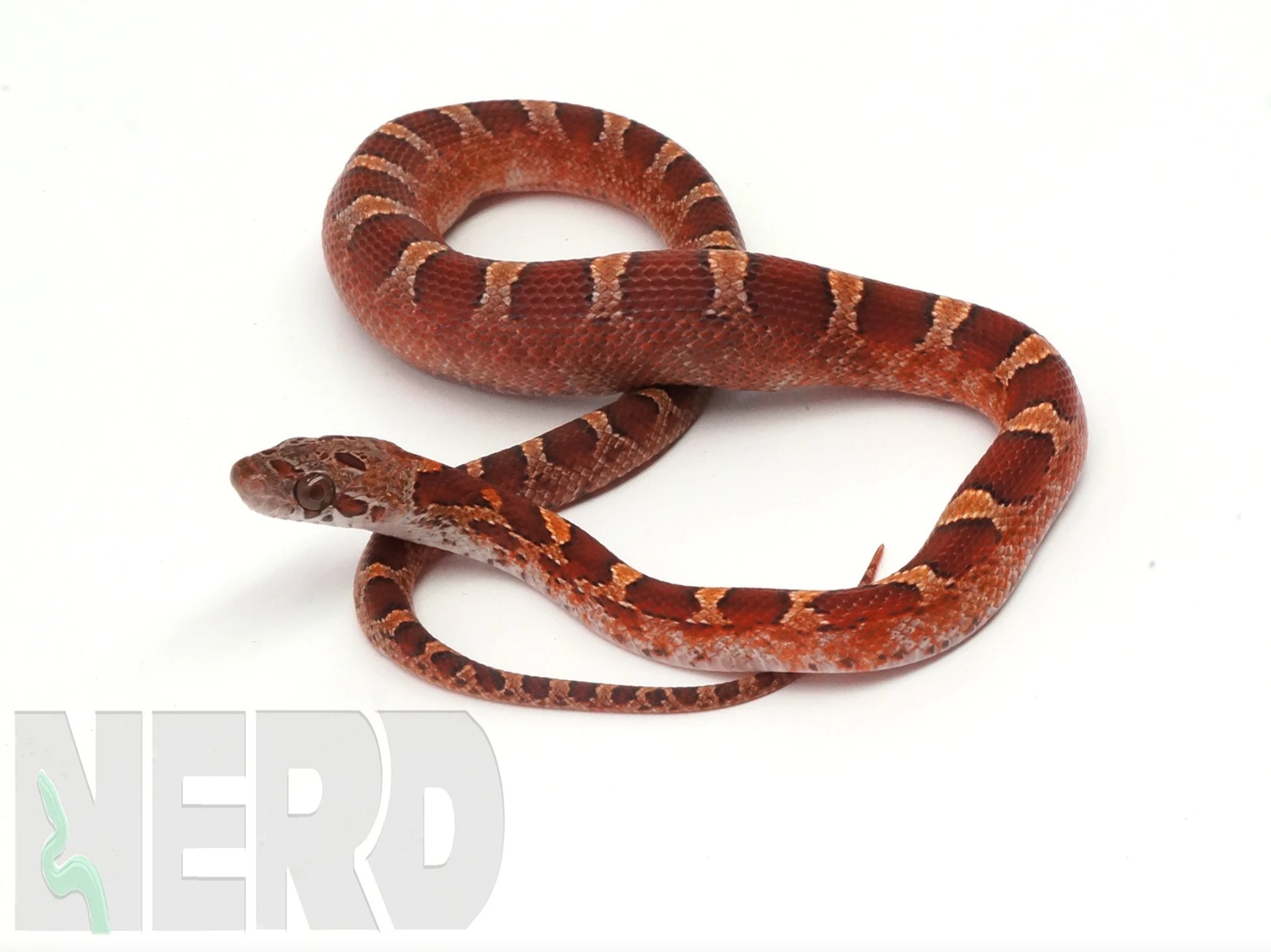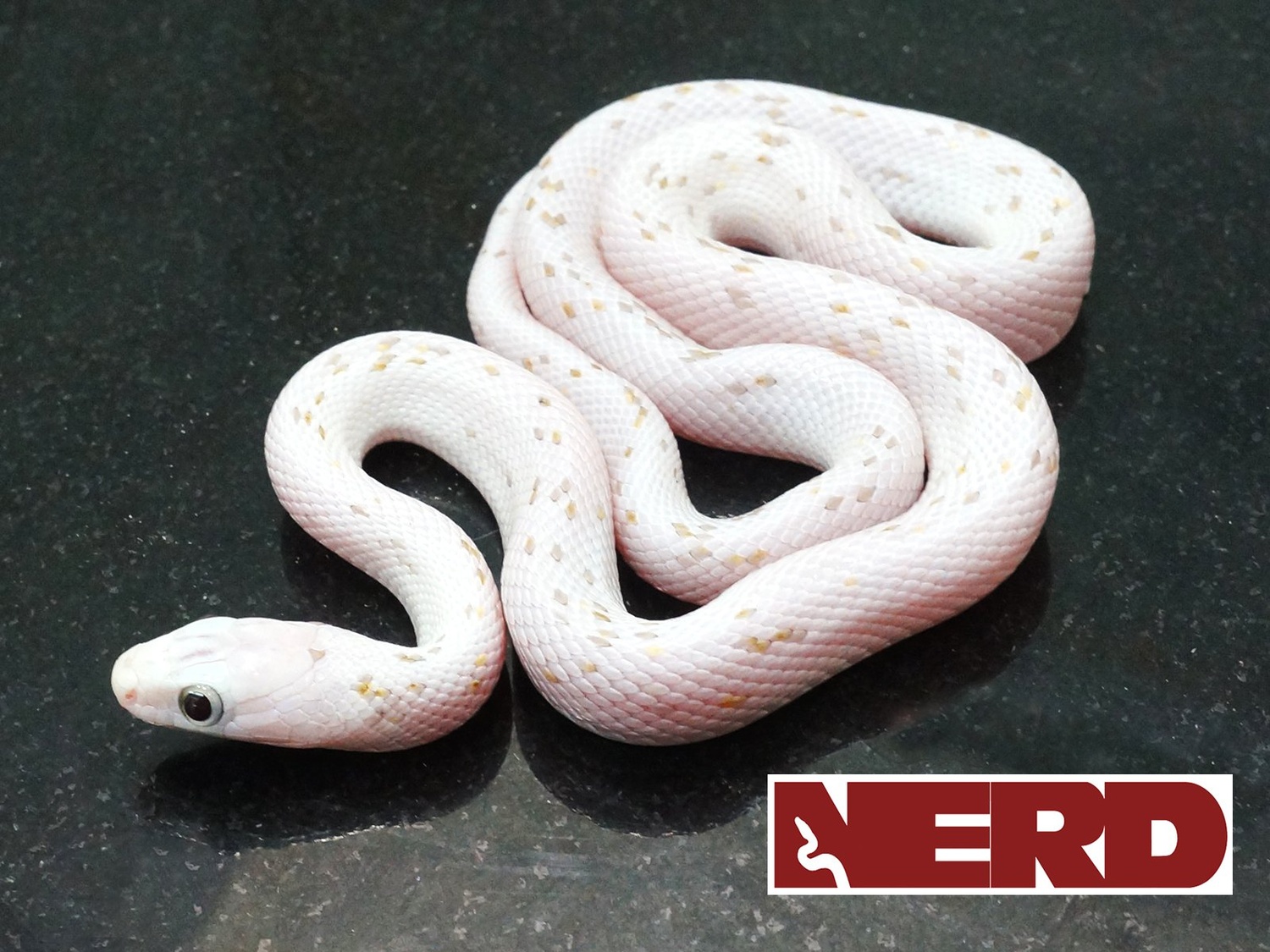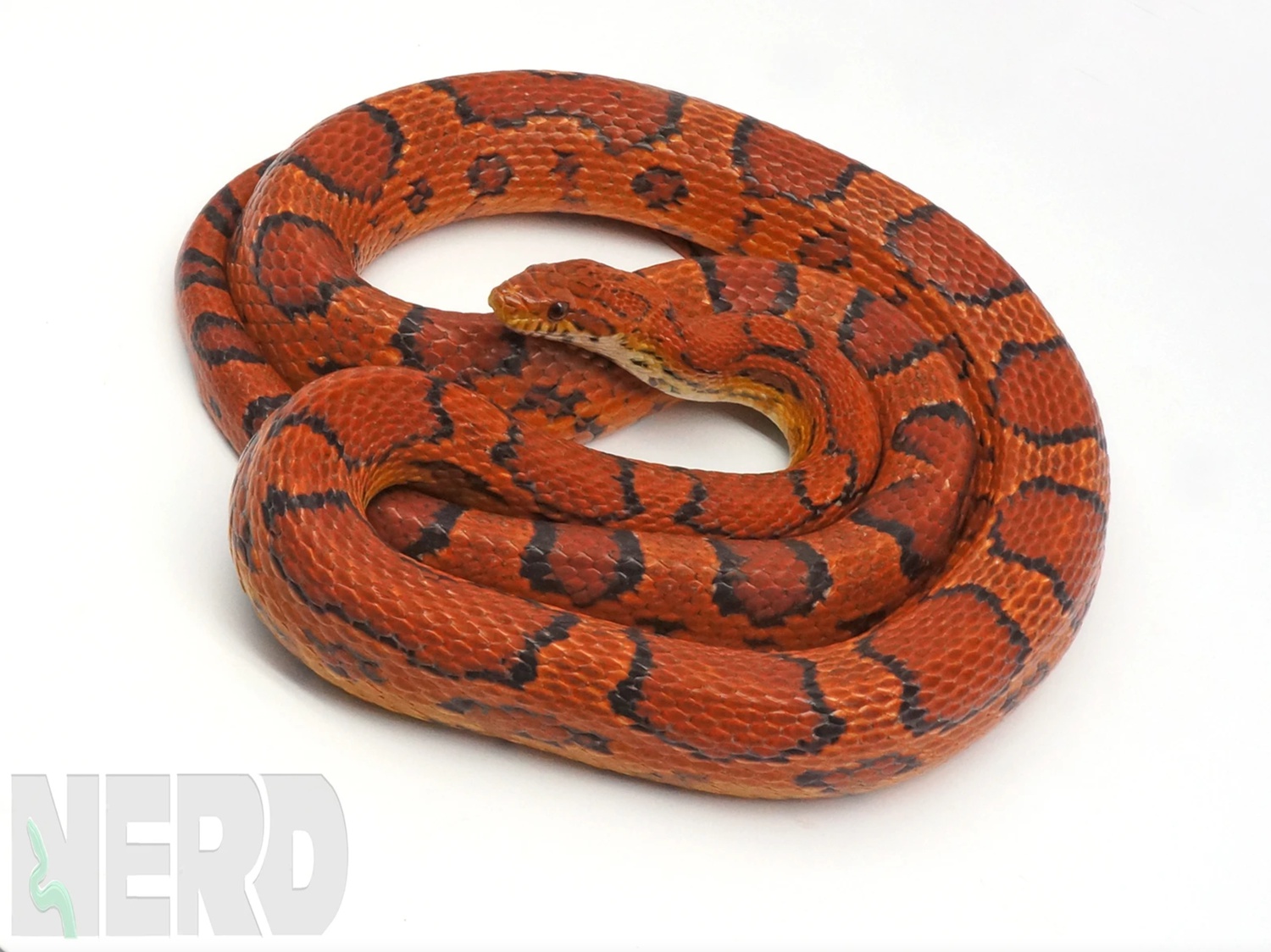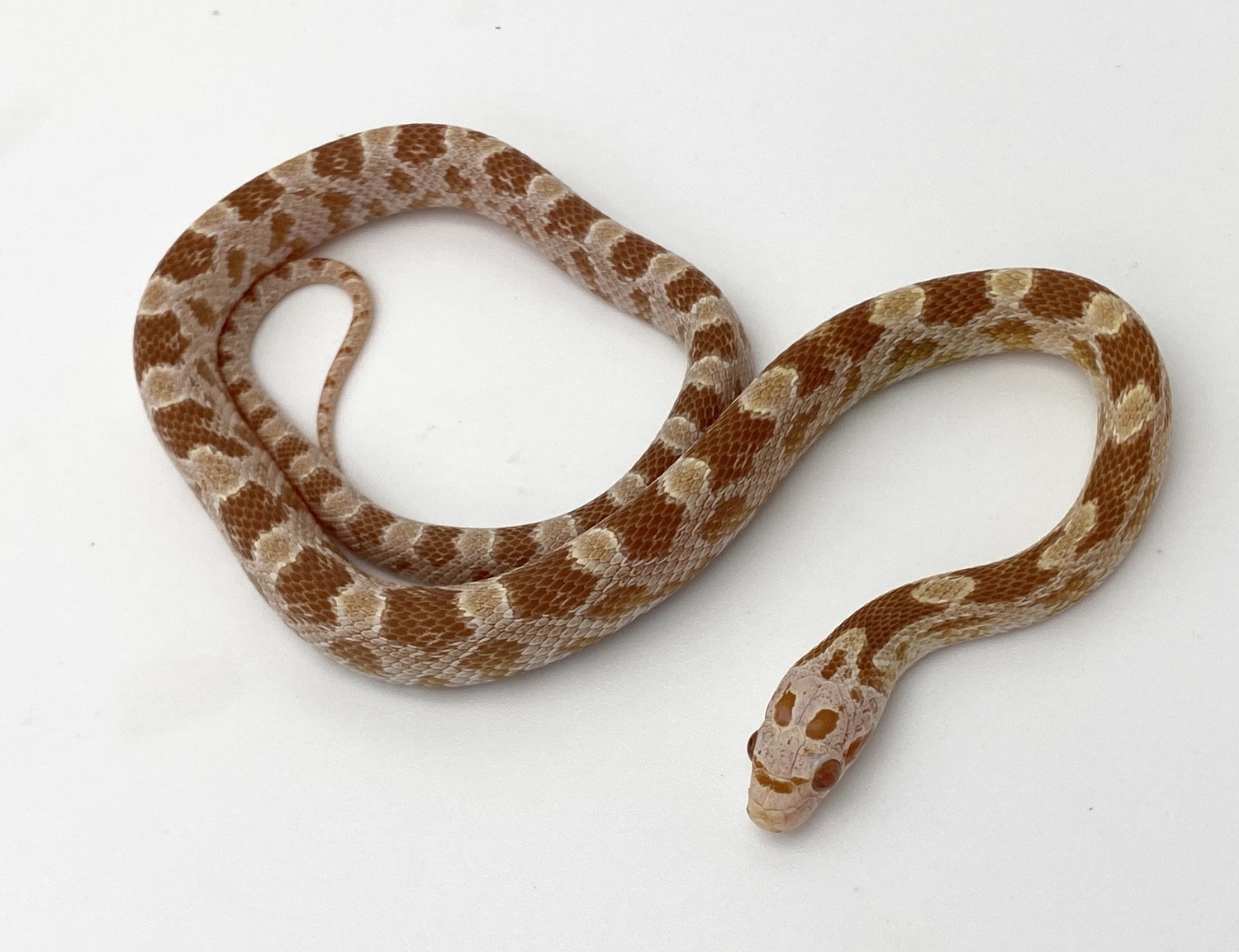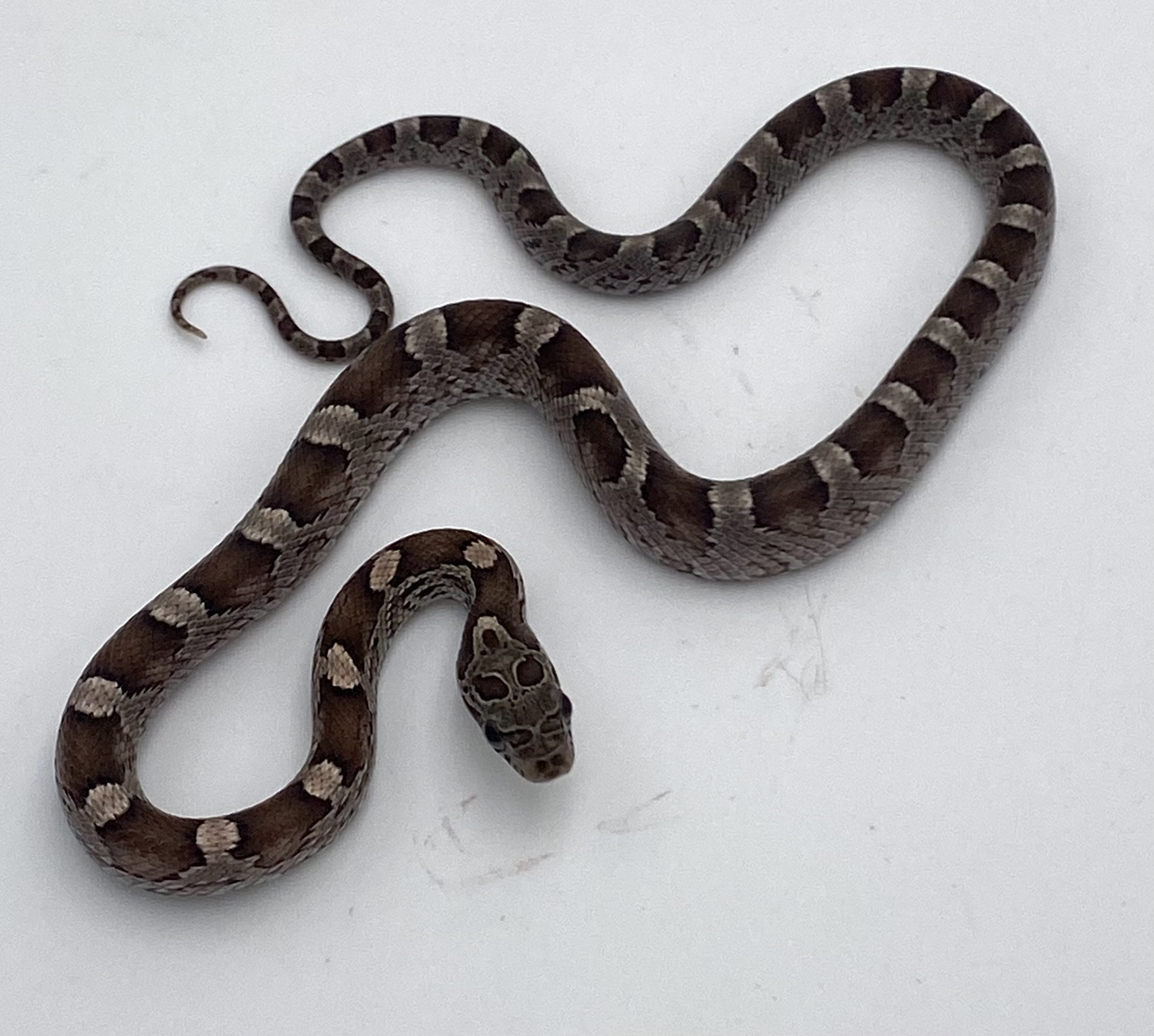Normal
Type: Other
Aliases: Wild, Classic, Carolina, Alabama, Keys, Okeetee, Miami
Issues: N/A
First Produced In: Unknown
Availability: Average
Last Updated: 2022-01-31
Do you have any suggestions or corrections for this article?
Click here to contribute feedback
About
Wild-type or normal corns can vary wildly in appearance. They typically will have shades of orange, red, brown, tan, gray, yellow, with small amounts of black or white. Different areas of their natural range have put selective pressure on certain colors, which has led to great disparity in the appearance of genetically normal corn snakes.
History
Corn snakes have been kept in captivity since at least the 60s. Their manageable size, ease of care, mild disposition, and of course, colorful appearance, make them a popular choice for a pet snake.
Appearance
Head
The head of a normal corn snake typically has a V-shape behind the eyes and a wide band across the nose. Behind the V-shape, normal snakes can have a small variety of patterns, including arrowheads, hearts, or dots. The eyes are typically orange or brown, usually matching the saddle color, with a black pupil. Yellow along the sides of the neck and face is very common in adult corns.
Body
The body of a normal corn snake typically consists of shades of orange, red, or brown. Large splotches, called saddles, run down the snake’s body, all the way to the tip of the tail. The saddles will be darker than the background color (the spaces in between the saddles). The saddles on a normal corn snake typically have black borders of varying thickness. Neonates usually hatch out very dark brown, with a light background color. As they grow and shed, they will gain color and usually brighten up. Looking at the color at the base of the neck right behind the head can usually give an indication of how bright the baby will be as an adult.
Belly
Normal corn snakes have a black and white checkered belly. Sometimes a few spots of orange or red will be present in the checkers.
Tail
The tail will match the colors and pattern of the body.
Proven Lines
Kisatchie, Milksnake Phase, Okeetee, Miami, Keys, Alabama, Zigzag
There are several locales and line bred normal corns.
Okeetee corns are classified by their thick borders. They also typically have clean, bright colors (orange and red), but that isn’t a requirement to be classified as an okeetee. The original okeetee corns were from the Okeetee Hunt Club in South Carolina, but most okeetees in the hobby today are line bred for that look. Some people prefer to distinguish the okeetee locale snakes from the line bred snakes by referring to them as okeetee (for locality based animals) or okeetee-phase (for line bred animals).
Extreme okeetees are okeetees with even thicker borders.
Miami is a corn that is classified by having very gray or silvery background color and dark red saddle color. As with the okeetee corns, they were originally wild caught from the Miami area, and eventually line bred to really enhance and clean up the look of the gray and dark red. Miami-phase corns should have very little or no yellow or tan in the background color.
Keys corns originated in the Florida keys. They tend to be a smaller bodied corn snake and may also be more slender. They have a bit of a hypo-like appearance, with less red and more orange and tan. They usually will have very thin or nonexistent borders around their saddles. They also may have split checkers (checkers that pushed to the sides and do not meet in the middle) on their bellies.
Related Traits
No known related traits
